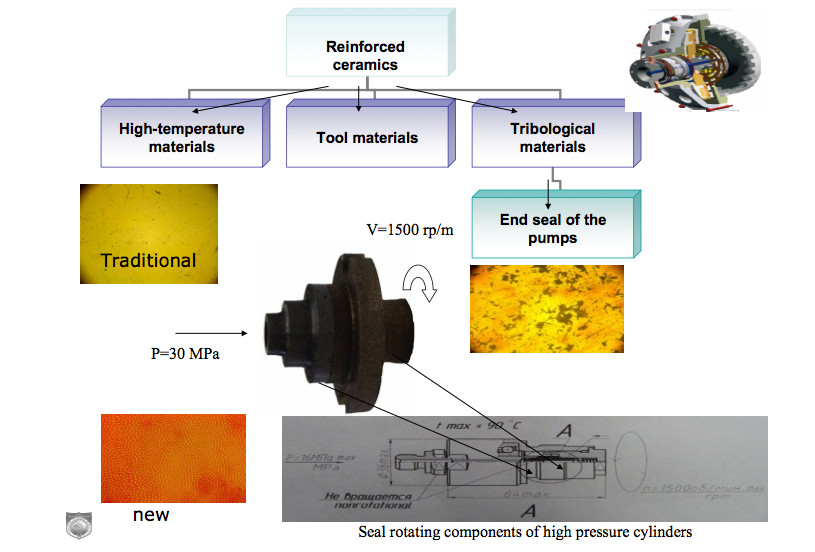Creating Physical and chemical bases of control ultrathin structure kvaziviscous reinforced high temperature ceramics multifunctional use
The influence of the kinetic parameters of the process of directional solidification from the melt and directional sintering in the dispersed state, crystal chemistry and diffusion properties of the initial components, energy parameters of elastic waves, the nature of alloying components on the structural and geometric characteristics of the phase components of ceramic composite materials are investigated. The superposition of mechanical vibrations and alloying can reduce in 3-4 times the size of reinforcing phase during directional solidification of eutectic alloys, and therefore increase by 30-40% mechanical strength, and is 2-3 times lower value of fragility, increase the heat resistance of composite ceramic material. A new class of ceramic composite materials, able to work under high-temperature thermomechanical loads up to 1600 oC. A systematic study on ultrafast cooling of molten eutectic alloys of quasibinari systems and influence the fields of mechanical vibrations with current on the phase transformation, packing and microstructure formation of capillary-porous bodies in a large temperature gradient. Found that at cooling rates greater than 2500 deg / s by grain-boundary and strain hardening the hardness of the reinforced ceramic composites increased up to 30%. Studies on heat treatment of ceramic materials ushered in a new perspective on the creation of new classes of tool and wear-resistant, super-hard ceramic and metal-ceramic composites, with more high-strength metal bonds, materials and technologies of their manufacture. The seals of hydraulic pressure using the new ceramic composite and metal materials are made and implemented at "Sudmash" industrial plant.

| Attachment | Size |
|---|---|
| 392 KB |




